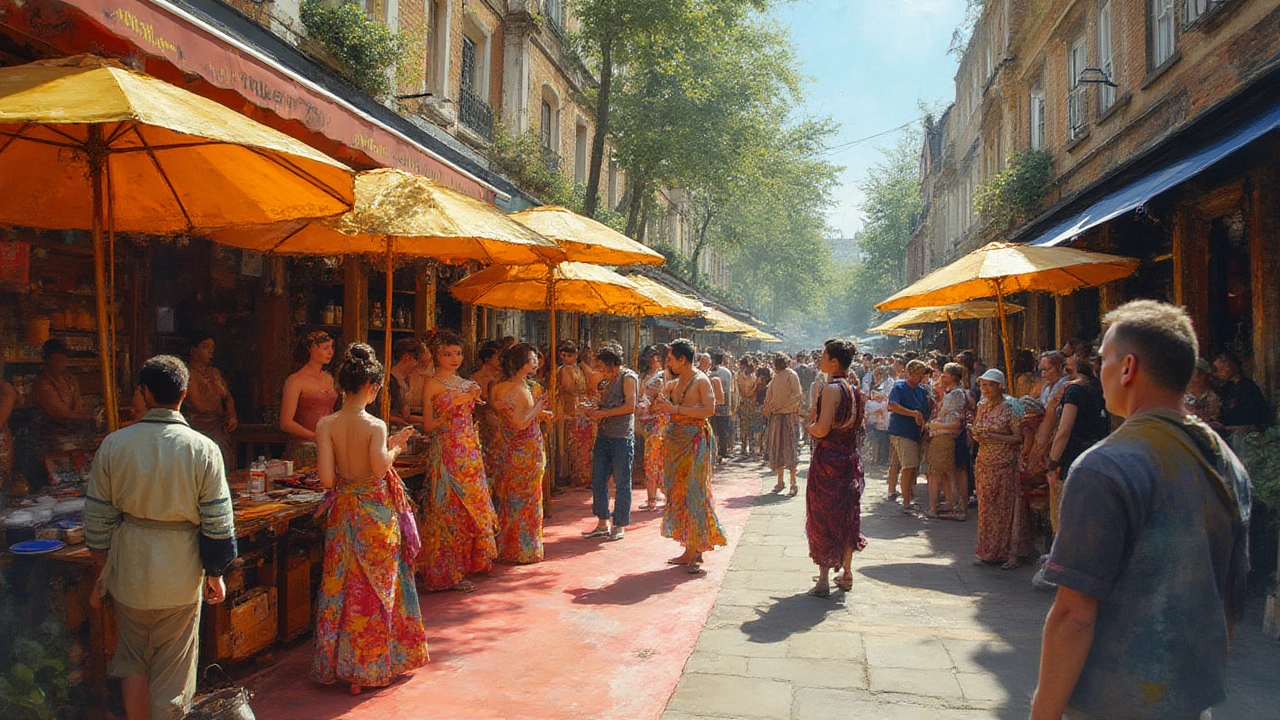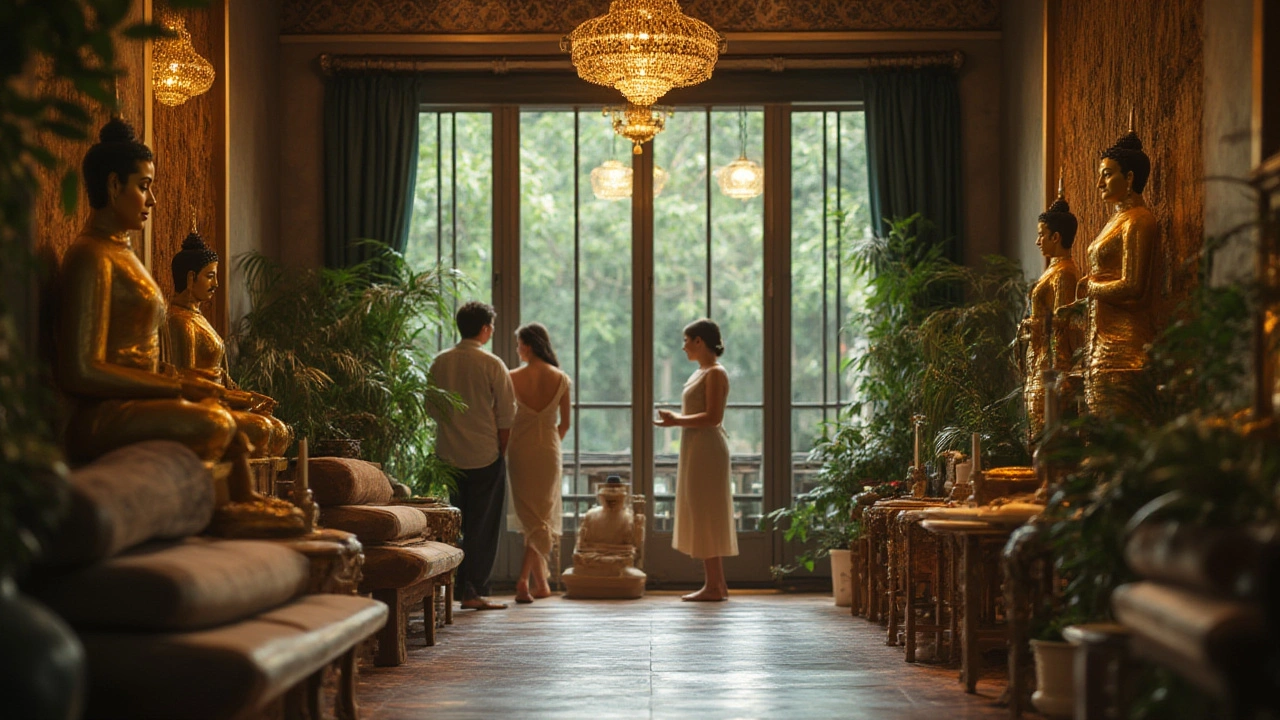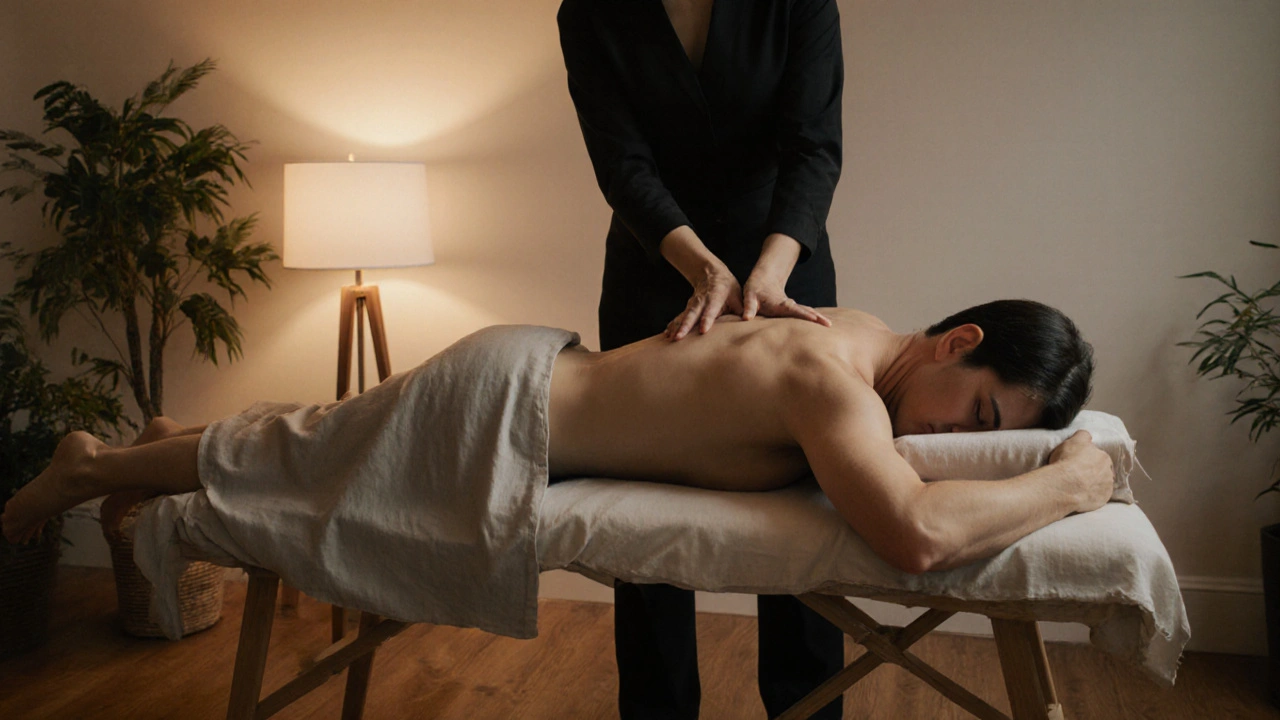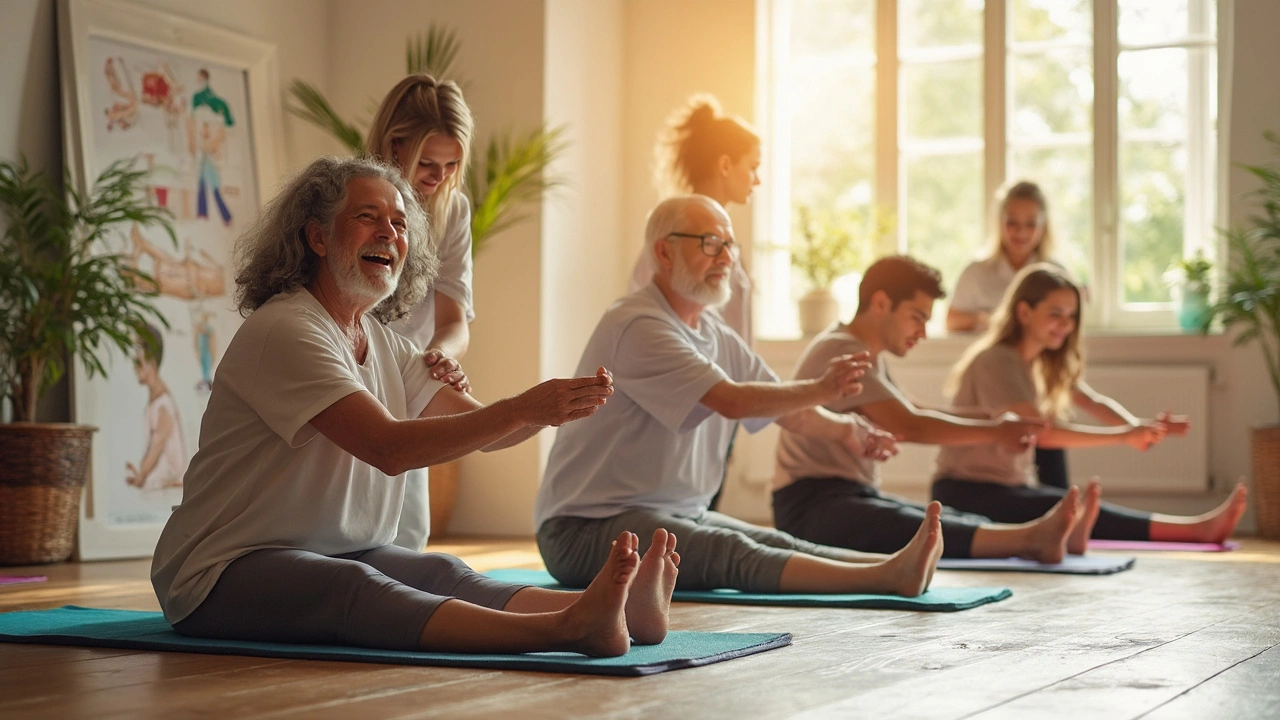Picture this: you’re sprawled on a comfortable mat, faint notes of lemongrass tickling your senses, as gentle hands stretch, press, and cradle your body in slow, rhythmic patterns that feel ancient yet totally new. Most people know Thai massage as something you do on vacation—maybe in a breezy hut after a day at the beach, or squeezed into a luxury spa schedule. But here’s the twist: Thai massage isn’t just about feeling good. It’s a whole cultural world, a centuries-old wellness art that reshapes how you experience your own body and energy.
What Is Thai Massage? Understanding the Culture and Context
Thai massage, or Nuad Boran in Thai (pronounced “nwat bo-RAHN”), is less about just kneading sore muscles and more a blend of movement, touch, and mindful energy. This isn’t the oil slick and gliding strokes you get with Swedish massage. Thai massage takes you back literally thousands of years—traced to Jivaka Kumar Bhaccha, a physician who was reportedly close to the Buddha. Picture ancient healers weaving together Indian Ayurvedic concepts, Chinese acupressure, and a magic that’s wholly Southeast Asian. Let’s be real: people didn’t start calling it “lazy yoga” for nothing. You keep your clothes on, and you’re guided—sometimes nudged—through stretches and yoga-like positions you might never manage on your own. This isn’t just about relaxing; it’s about shifting the very energy lines in your body, called “Sen.”
People in Thai culture didn’t just go for massage when they felt tense. Traditionally, Thai massage was woven into holidays, rituals, temple visits, and medicine. There are century-old murals in Bangkok’s Wat Pho Temple, the country’s massage capital, showing monks stretching one another. It’s a practice that’s passed down from teacher to pupil, sometimes in Buddhist temples, sometimes in tucked-away home studios. That connection—instructor to student, healer to client—feels special. UNESCO even listed traditional Thai massage as part of the world’s “intangible cultural heritage” in 2019, spotlighting how deep these roots go.
Ever tried searching “best Thai massage” in any modern city? The options now stretch from upscale hotel spas to tiny storefronts, but the essence remains that this isn’t just about tension relief. It’s an art. For Thais, massage is preventive—not just corrective. People come in young and old, families, workers, monks, and tourists. And while the global wellness craze has spun new takes (Thai massage with CBD? It exists!), the cultural heritage and holistic focus are still the core of the real thing.
Why Try Thai Massage? Unique Benefits and What Science Says
It’s tempting to ask, “Does this really work?” Research out of Chulalongkorn University found that after just one session, most people report improved flexibility, reduced muscle soreness, and—you guessed it—calmer minds. Unlike massages that only focus on muscle knots, Thai massage aims to unblock and balance the body’s energy flows. The routines involve slow-pressure points along the Thai massage “Sen” lines and gentle yoga-style stretching. This combo boosts circulation, lowers heart rate, and can even help people sleep better.
Have stiff shoulders from sitting or a back that throbs after a run? There’s emerging evidence (yep, real clinical studies in medical journals) that Thai massage can work as well as—or sometimes better than—physiotherapy methods for issues like tension headaches and lower back pain. Its stretching component might explain why. You’ll often feel taller and lighter after a session, almost like someone unraveled a few years of desk work right out of your spine. If you’re someone who’s afraid you’ll get bored just lying still, this style keeps you more engaged.
The mindful vibe is another bonus. Traditional Thai massage is often done in quiet spaces, even with a meditative feel. Many find this more comforting than quiet, clinical rooms. For people struggling with anxiety or persistent stress, that mix of gentle human touch, movement, and focused breathing can be grounding in ways talk therapy alone isn’t.
Bonus tip: If regular exercise is part of your life, Thai massage can become your best off-day companion. Athletes use it to aid in muscle recovery, speed up healing time, and prevent injuries. If you want extra stress-busting, some places use warm herbal compresses. They look like little cotton dumplings packed with lemongrass, turmeric, and ginger—gently pressed onto sore spots after stretching.
| Benefit | How Thai Massage Helps |
|---|---|
| Improved Flexibility | Gentle full-body stretches increase joint mobility and muscle length |
| Pain Relief | Pressure techniques target muscle tension, sometimes outperforming standard massage (BMJ Study 2021) |
| Stress Reduction | Mindful pace and breathwork lower cortisol and aid relaxation |
| Cultural Connection | Integrates traditional rituals for a deeper experience |
| Enhanced Circulation | Rhythmic movements stimulate blood and lymph flow |
You’ll hear stories from frequent visitors who say Thai massage transformed their relationship with their bodies. One woman I chatted with in Chiang Mai swears her migraines faded after a month of weekly sessions, something her medication never managed. While not everyone will have a miracle cure, most walk out feeling a sense of lightness, clarity, and that rare “reset” that lingers for days.

Types of Thai Massage and How to Find Your Best Fit
Thai massage is far from one-size-fits-all. Whether you’re a traditionalist, an adventurer, or someone who craves extra luxury, there’s a style out there calling your name.
- Traditional Thai Massage (Nuad Boran): This is what most people picture—mat on the floor, no oil, lots of assisted stretching mixed with slow, deep compressions. You wear loose pants and a T-shirt. Forget candles and whale sounds; the vibe is calm, but the focus stays on movement and energy lines.
- Thai Oil Massage: Think of this as a softer, more Western-friendly version. Oil is worked into muscles for relaxing glides, but you still get stretches. Great for people nervous about deep pressure.
- Herbal Compress Thai Massage: Herbal poultices (steamed bundles of lemongrass, turmeric, kaffir lime, and more) are pressed along your Sen lines, adding warmth and an earthy scent. This is especially loved in spa settings and for deep muscle stiffness.
- Foot (Reflexology) Massage: A city staple in places like Bangkok’s night markets. Feet are pressed, rolled, and massaged, aiming to unblock energy pathways that affect the whole body.
If you’re traveling in Thailand, look for shops around temples like Wat Pho in Bangkok or the Old City in Chiang Mai. Want extra authenticity? Many massage schools there offer beginner lessons. For city dwellers worldwide, you’ll find reputable Thai massage therapists in most big towns—just look for places with certifications displayed, or therapists who trained in Thailand’s best-known schools.
Here’s a quick table to help you match your mood to your massage:
| Type | Best For |
|---|---|
| Traditional Thai | Yoga lovers, flexibility seekers, culture buffs |
| Oil Thai | Relaxation, newcomers to massage, those sensitive to deep pressure |
| Herbal Compress | Muscle soreness, fans of heat therapy |
| Thai Foot Massage | Travelers, quick stress relief, post-work fatigue |
If you’re booking abroad, search for reviews, therapist credentials, and don’t be shy about emailing with a quick question about their style. Reputable clinics are always happy to explain!
Thai Massage Session Guide: What to Expect, Cost, and Safety Tips
So what’s it actually feel like to get a Thai massage? First, you’ll ditch your shoes and slip into loose cotton pants (sometimes provided) and a shirt. You’ll be greeted with tea or cool water—places in Thailand love serving blue butterfly tea for that extra Instagram moment. The session itself happens on a firm mat on the ground. There’s a split-second of “wait, am I about to be twisted into a pretzel?” but a skilled therapist knows exactly how far to stretch without overdoing it.
Your therapist uses a mix of thumbs, palms, elbows, and even feet for pressure—slow, steady, and always rhythmic. They’ll gently move your arms and legs into new positions, often using their own body as counterbalance. If you’re nervous about being too stiff, just let your therapist know. They’ll adjust the stretches and skip anything you’re not comfortable with. Some Thai massage moves can feel like a gentle yoga pose or a deep, delicious stretch you never knew you needed. You’ll notice the pace is slow—almost like a moving meditation, syncing breath with movement. Don’t be surprised if you drift into a sort of waking dream; it’s normal to relax that deeply.
How long should you book for? A standard session is 60 to 90 minutes. In tourist hotspots, you might see quick 30-minute options (usually just legs, head, or neck), but the real treat is a full hour or more.
What does it cost? In Thailand, a one-hour traditional Thai massage can cost as little as 300–600 baht (about $8–$15 USD in 2025, even factoring in slight inflation). In Western countries, expect to pay anywhere from $50–$120 an hour, depending on the spa’s location, reputation, and any special add-ons like herbal compresses or aromatherapy.
Booking is usually straightforward. Most cities have online booking apps or websites—look for spots with detailed reviews and proper hygiene protocols. If you’re traveling, walk-ins are common, especially in busy areas or near markets. Always specify what you want—some places will ask if you prefer hard or gentle pressure, or want to focus on a specific tension hotspot.
Safety first: If you have recent injuries, major heart conditions, pregnancy, or joint replacements, talk to a doctor first. Share any health concerns with your therapist up front. Skilled Thai massage therapists know how to avoid pressure points that could be risky. And if you ever feel pain (as in, more than a deep stretch), say something—communication is everything. Skip Thai massage right after eating or drinking alcohol, and stay hydrated after your session.
Quick hygiene tip: In real Thai tradition, both you and your therapist are supposed to be clean and respectful; spas provide showers or wipes if you need a quick freshen up. Taking a shower before helps you relax and lets your therapist work more comfortably.
To compare Thai massage to Swedish massage—probably its most popular cousin globally—check out the table below:
| Feature | Thai Massage | Swedish Massage |
|---|---|---|
| Technique | Stretching, compression, pressure points | Long gliding strokes, kneading with oil |
| Position | On mat, fully clothed | On massage table, undressed to comfort level |
| Oil Usage | Rarely used | Always used |
| Intensity | Variable, can be strong or gentle based on needs | Mainly gentle to medium pressure, relaxing |
| Focus | Whole-body movement and energy flow | Muscle knots, relaxation |
Have more questions? Here’s a quick FAQ to clear up the most common curiosities:
- Does Thai massage hurt? — It shouldn’t be painful; stretches can feel intense, but always speak up if it’s too much.
- Do I need to bring anything? — Most places provide everything, but wearing loose, comfortable clothes never hurts.
- Is tipping expected? — In Thailand, it’s a nice gesture (20–50 baht is typical). Abroad, follow local norms (usually 10–20%).
- Are all Thai massage places legit? — Look for licensed therapists with visible credentials, and always check reviews if you’re new to a location.
- Can I talk during my session? — Sure, but many people find silence more relaxing. Your therapist will follow your lead.
Ready to experience a massage that’s a little yoga, a little meditation, and a whole lot of cultural magic? There’s no need to wait for your next Thai beach holiday. Search out a qualified Thai massage therapist in your city, and let your body and mind sink into a new rhythm. No two sessions are exactly the same, but that’s the beauty—you leave not just refreshed, but a little bit changed.



